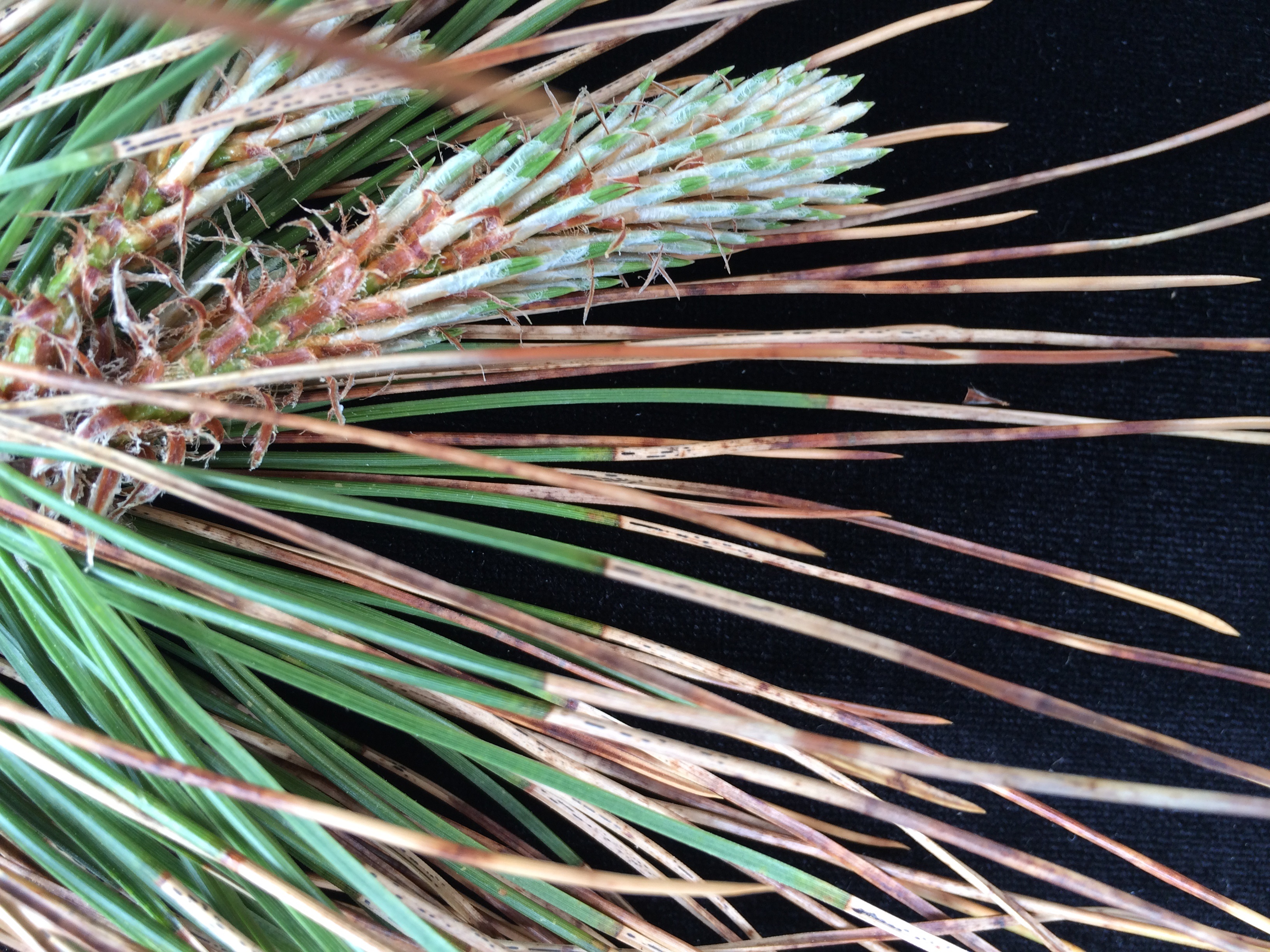
Sections below this point reveal less generalized damage which is restricted to the transfusion tissue. Endodermis as well as transfusion cells of the stele are distorted. Adjacent sections indicate injury to mesophyll cells with necrotic regions adjoining the substomatal chambers. A study of successive cross sections beginning near the tips of freshly blighted needles shows complete disorganization of both mesophyll and stele cells as the tip.

Trees vary in susceptibility, but only physiologically active needles of the current year are damaged. Blighted needles are characterized by orange-brown necrosis restricted to needle tips and progressing into adjacent tissues, resembling semimature-tissue blight of white pine. Can look like winter burn without close inspection.A needle blight induced by air pollutants has been common among New Jersey Austrian pines. Strategies 1 and 2 are strictly organic approaches.īanding on Austrian pine ( Pinus nigra) needles caused by dothistroma blight white flecks are an insect, pine needle scale (Hemiptera)ĭothistroma needle blight on Austrian pine ( Pinus)ĭothistroma needle blight on mugo pine ( Pinus)ĭothistroma needle blight on mugo pine ( Pinus) note reddish brown spotsĭothistroma needle blight on mugo pine ( Pinus) note that needle tips are dead but base. Other protectant fungicides include chlorothalonil (Daconil), Mancozeb and pentachloronitrobenzene. A second spray in mid- June will protect the current season's needles which are resistant until they are fully grown. The first spray in early to mid-May protects mature foliage. Adequate control of Dothistroma blight can be achieved with one or two sprays in late spring using a copper-based fungicides such as Bordeaux mixture.

Choose other nonsusceptible evergreens.ģ. Ask for these at your local garden center or nursery. Plant resistant pines.Research on Austrian pine has determined that some populations are highly resistant to Dothistroma. Serious infections can be prevented in the next growing season with the use of fungicides.Ģ. Wait and see how serious the problem becomes in one season. Annual spraying is not necessary in residential plantings. Live with the disease but monitor yearly. Symptoms on newly infected tissue are especially obvious in early fall.ġ.

The fungus attacks the mature foliage current season's needles are resistant until they are fully mature. Because of the continual release of spores, infections can occur anytime from late April to late October. The infective spores are released during wet weather and dispersed by rain splash throughout the growing season. Infection typically is most severe in the lower crown of the tree, closer to the inoculum that spreads from infected needles that have fallen from the tree.ĭothistroma overwinters in infected needles.

From the time symptoms are first noticed to the time of needle browning may take 2–3 weeks. The needles will begin to die back from the tip, but needle bases usually remain green. The spots and bands later turn reddish-brown. The earliest observable symptoms are dark-green bands and tan spots or bands on the mature needles. The disease makes pines in landscapes unsightly and successive years of infection can result in decline and death of the tree. This blight is caused by the fungus Dothistroma pini, which infects and kills needles. Austrian pine is the primary host plant in Missouri. Dead needle tips (resembling cigarette ash) and banding on Japanese black pine ( Pinus thunbergii) probably caused by dothistroma blight of pinesĭothistroma blight is a foliar disease of a number of pine species throughout the Midwest.


 0 kommentar(er)
0 kommentar(er)
